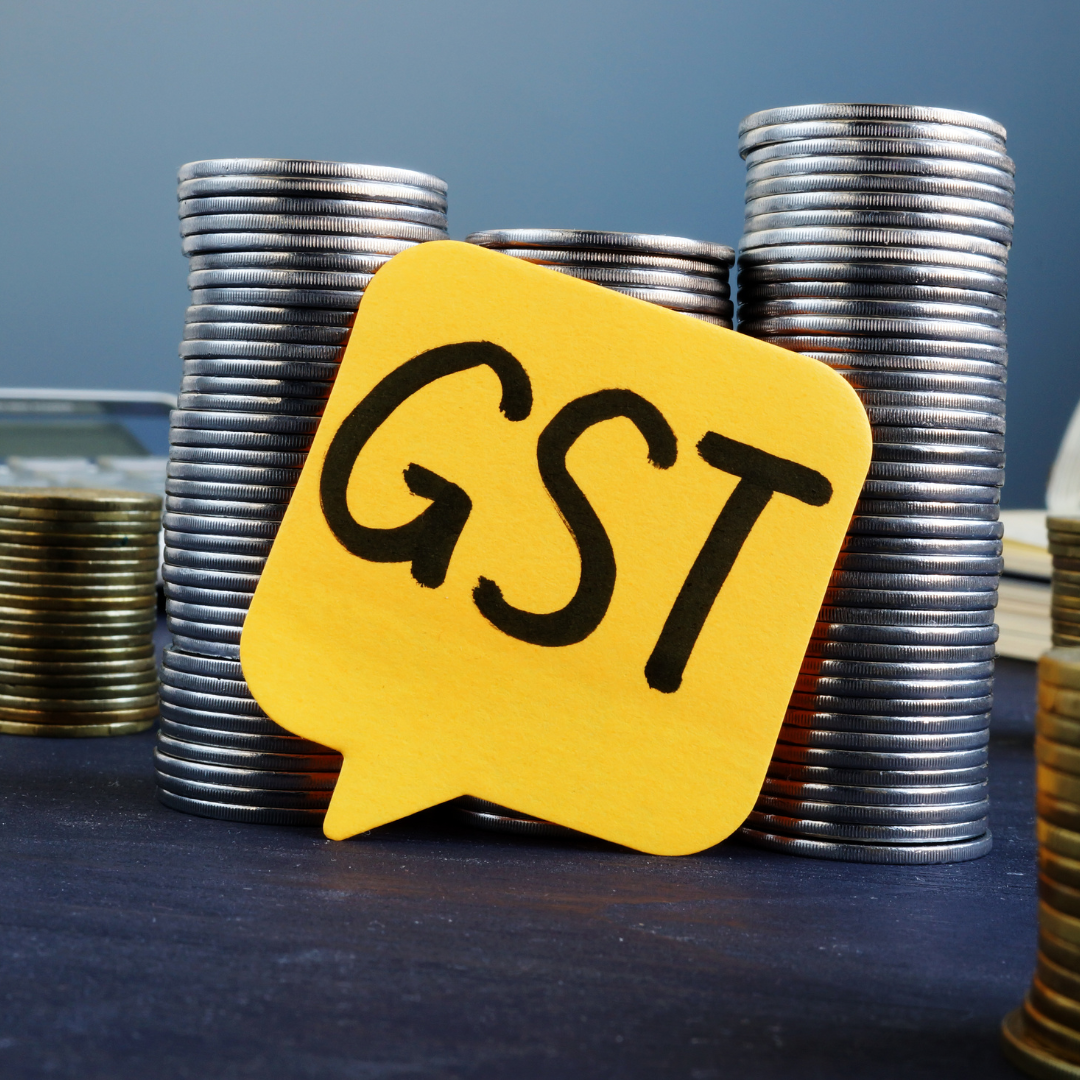Goods and Services Tax (GST) in India: A Comprehensive Overview
Evolution of GST in India:
The idea of GST was first proposed by the Kelkar Task Force in 2004, advocating for a unified tax system at the national level. Subsequently, several committees and commissions deliberated on the roadmap for GST implementation, recognizing its potential to simplify taxation and boost economic productivity. After years of consultations and discussions, the stage was set for the introduction of GST in India.
Over the years, various governments have made concerted efforts to streamline India’s complex indirect tax structure. The introduction of MODVAT, followed by CENVAT and VAT, marked significant milestones in this journey. Each step aimed to bring about greater efficiency and transparency in tax collection, laying the groundwork for the eventual rollout of GST.
Components of GST in India:
GST in India comprises two primary components: Central Goods and Services Tax (CGST) levied by the Central Government, and State Goods and Services Tax (SGST) imposed by the respective State Governments. Both CGST and SGST operate on a similar framework, ensuring consistency in tax laws and classifications across the country. This dual GST structure aims to harmonize indirect taxation while preserving the fiscal autonomy of states.
Additionally, there is an Integrated Goods and Services Tax (IGST) levied on inter-state transactions of goods and services. IGST is collected by the Centre but is then distributed among the states based on a pre-defined formula. This mechanism ensures seamless transactions across state borders and prevents double taxation.
Taxes Subsumed under GST in India:
GST subsumes a plethora of central and state taxes, eliminating the cascading effect of taxation and promoting seamless tax credit mechanisms. Some of the prominent taxes subsumed under GST include Central Excise Duty, Service Tax, VAT, Sales Tax, Entertainment Tax, and Entry Tax, among others. By consolidating these taxes under a unified framework, GST simplifies compliance for businesses and enhances tax efficiency.
Moreover, GST encompasses various indirect taxes that were previously levied on goods and services at different stages of the supply chain. This consolidation not only reduces the tax burden on businesses but also enhances transparency and accountability in the tax system.
Liability and Tax Collection Mechanism:GST in India
Under GST, the ultimate tax liability rests with the end consumer, ensuring that the tax burden is distributed equitably across the supply chain. Businesses are required to collect GST on behalf of the government and remit it to the appropriate authorities. The revenue from SGST is attributed to the state where goods or services are consumed, ensuring a fair distribution of tax proceeds among states.
To facilitate tax collection and compliance, GSTN (Goods and Services Tax Network) was established as a robust IT infrastructure. GSTN serves as a common portal for taxpayers to register, file returns, and make payments related to GST. This digital platform has streamlined tax administration, minimized manual intervention, and enhanced the efficiency of the tax system.
How to Register for GST in India:
Registering for GST is mandatory for businesses whose turnover exceeds the prescribed threshold limit. The registration process involves several steps and requires certain documentation. Here’s a step-by-step guide:
Step 1: Determine Eligibility:
- Assess whether your business meets the criteria for GST registration based on turnover and nature of operations.
Step 2: Gather Required Documents:
- Prepare necessary documents such as PAN Card, Aadhaar Card, business registration proof, address proof, bank account details, and authorized signatory details.
Step 3: Access GST Portal:
- Visit the GST Portal (www.gst.gov.in) and navigate to the ‘Registration’ section.
Step 4: Fill Application Form:
- Fill out the GST registration application form (GST REG-01) with accurate information regarding your business details, turnover, and other required fields.
Step 5: Upload Documents:
- Upload scanned copies of the required documents as specified in the application form.
Step 6: Verification:
- Complete the verification process through OTP (One-Time Password) sent to your registered mobile number and email ID.
Step 7: Application Submission:
- Submit the application form along with the necessary documents.
Step 8: Application Processing:
- Once submitted, the application will be processed by the GST authorities.
Step 9: GSTIN Allotment:
- Upon successful verification, a unique GST Identification Number (GSTIN) will be allotted to your business.
Step 10: Certificate Download:
- Download and print the GST registration certificate from the GST Portal.
Time Frame and Fees:GST in India
The time frame for GST registration processing varies but typically takes around 7 to 10 working days from the date of application submission. The registration process is free of charge.
Legal Complications and Obligations:GST in India
Failure to comply with GST regulations and obligations may result in legal complications and penalties. Businesses are required to maintain accurate records, file timely returns, and adhere to GST provisions to avoid penalties and legal consequences.
How to File GST Returns:GST in India
Filing GST returns is a crucial aspect of compliance under the GST regime. Here’s a simplified guide to filing GST returns:
Step 1: Maintain Records:
- Maintain accurate records of inward and outward supplies, input tax credit, and other relevant transactions.
Step 2: Access GST Portal:
- Log in to the GST Portal using your credentials.
Step 3: Navigate to Returns Section:
- Navigate to the ‘Returns’ section and select the relevant return form based on your business type and turnover.
Step 4: Fill Return Form:
- Fill out the return form with details of outward supplies, inward supplies, and tax payable.
Step 5: Reconciliation:
- Reconcile the data with your books of accounts and ensure accuracy before submission.
Step 6: Verification and Submission:
- Verify the return and submit it on the GST Portal.
Step 7: Payment of Tax:
- Pay the tax liability, if any, through the designated payment modes.
Penalties:
Non-compliance with GST provisions may attract penalties ranging from fines to suspension or cancellation of GST registration. Penalties are imposed for late filing of returns, incorrect information provided, non-payment of tax liabilities, and other violations.
Duties and Responsibilities:GST in India
As a registered taxpayer under GST, businesses have various duties and responsibilities, including:
- Collecting and remitting GST to the government.
- Maintaining accurate records of transactions.
- Filing timely GST returns.
- Complying with GST provisions and regulations.
- Facilitating tax audits and assessments as required by authorities.
Conclusion:
Understanding the intricacies of GST registration, compliance, and filing procedures is essential for businesses to navigate the complexities of India’s indirect tax regime. By adhering to legal obligations, maintaining accurate records, and fulfilling tax duties, businesses can ensure smooth compliance with GST regulations and contribute to the success of India’s tax reform initiatives. As GST continues to evolve, staying informed and proactive in meeting regulatory requirements is paramount for businesses to thrive in the dynamic tax environment.
Faqs
What is GST, and why is it significant for India’s taxation system?
GST stands for Goods and Services Tax, a comprehensive indirect tax levied on the supply of goods and services in India. It aims to streamline the taxation system, eliminate cascading taxes, and create a unified national market.
What are the key components of GST in India?
GST in India comprises Central Goods and Services Tax (CGST) levied by the Central Government, State Goods and Services Tax (SGST) imposed by state governments, and Integrated Goods and Services Tax (IGST) on inter-state transactions.
Which taxes are subsumed under GST?
GST subsumes various central and state taxes, including Central Excise Duty, Service Tax, VAT, Sales Tax, Entertainment Tax, and Entry Tax, among others.
What are the legal obligations and responsibilities of businesses under GST?
Businesses registered under GST have obligations such as timely filing of returns, accurate record-keeping, compliance with GST provisions, and cooperation with tax authorities during audits and assessments.
How can businesses register for GST, and what is the process?
Businesses meeting the threshold turnover must register for GST through the GST Portal by filling out the registration application form and providing necessary documents. The process involves verification and the allotment of a unique GST Identification Number (GSTIN).
What are the penalties for non-compliance with GST regulations?
Non-compliance with GST regulations can lead to penalties such as late filing penalties, incorrect filing penalties, non-payment penalties, and evasion penalties. Penalties may vary based on the nature and severity of the violation.
How can businesses file GST returns, and what are the steps involved?
Filing GST returns involves accessing the GST Portal, selecting the relevant return form, filling out the form with accurate details of transactions, verifying the return, and submitting it along with tax payment, if applicable.
What is the time frame for GST registration processing, and is there any fee involved?
The time frame for GST registration processing typically takes around 7 to 10 working days. The registration process is free of charge.
What role does GSTN play in GST compliance?
GSTN (Goods and Services Tax Network) serves as a common portal for taxpayers to register, file returns, and make payments related to GST. It facilitates tax administration, minimizes manual intervention, and enhances compliance.
How can businesses ensure smooth compliance with GST regulations amid regulatory changes?
Businesses can stay informed about updates and changes to GST regulations, maintain accurate records, seek professional assistance if needed, and actively participate in training and awareness programs conducted by tax authorities.
Author Note: This comprehensive overview of Goods and Services Tax (GST) in India has been crafted by Noor Siddiqui, a tax expert from Etaxdial.com. With a profound understanding of India’s taxation landscape and extensive experience in assisting businesses with GST compliance, Noor Siddiqui brings forth valuable insights into the complexities of GST implementation, registration, compliance, and legal obligations. Through this article, Noor Siddiqui endeavors to provide businesses with a clear understanding of GST’s significance, its components, registration process, filing procedures, penalties for non-compliance, and strategies for ensuring smooth compliance amidst regulatory changes. For more expert guidance and assistance with GST-related matters, visit Etaxdial.com.




